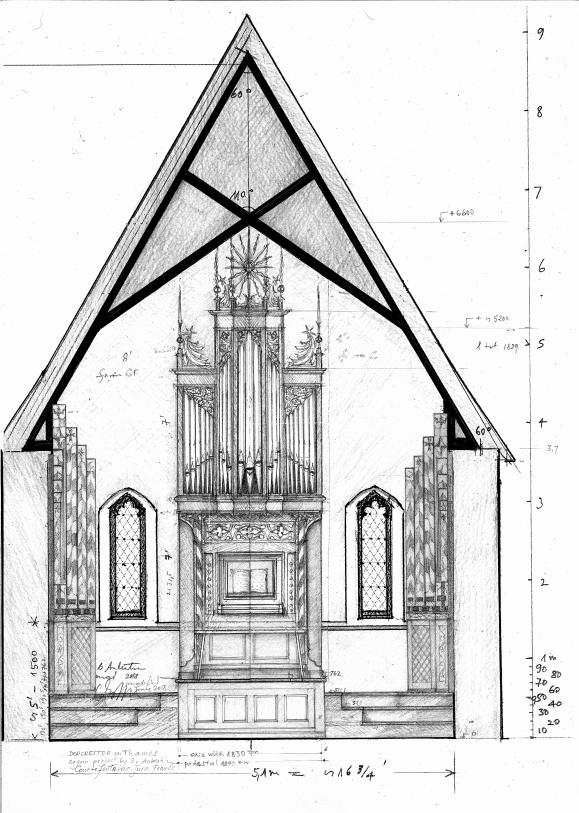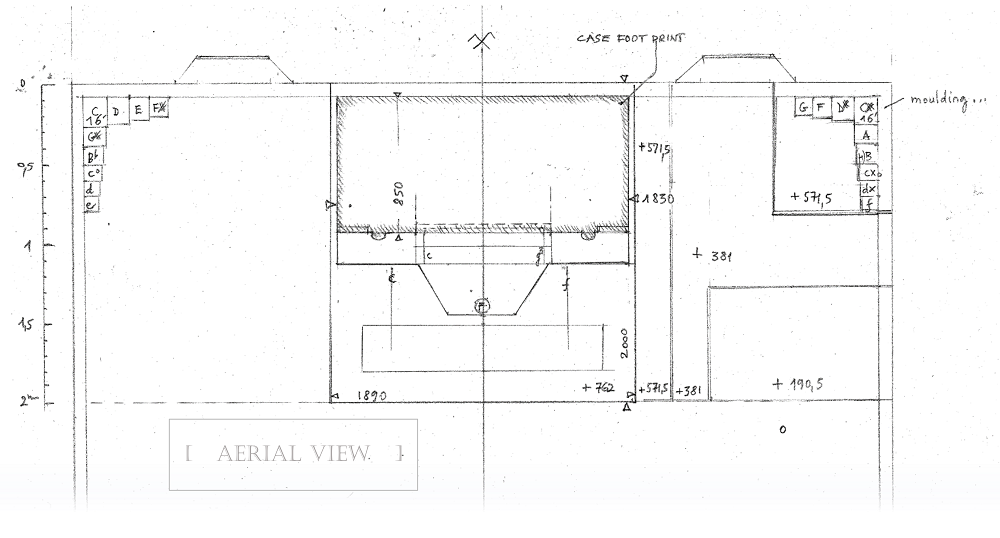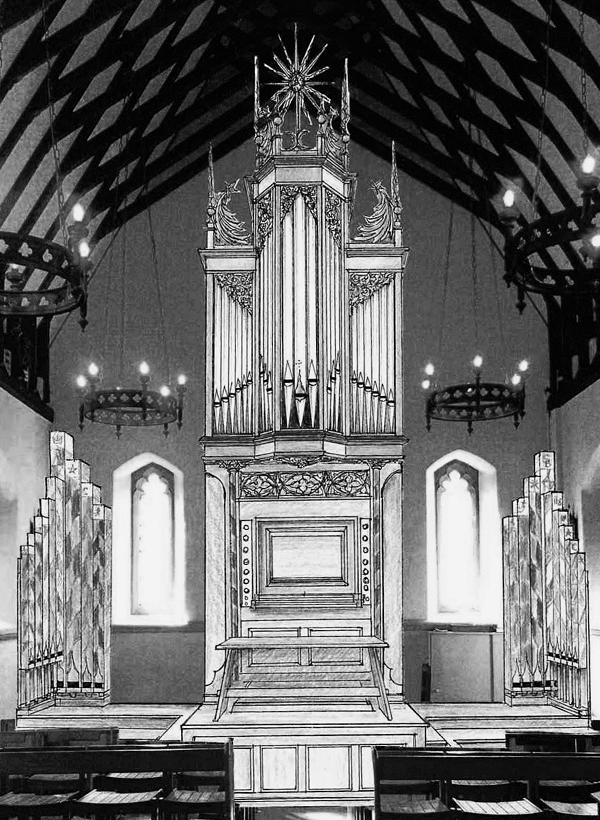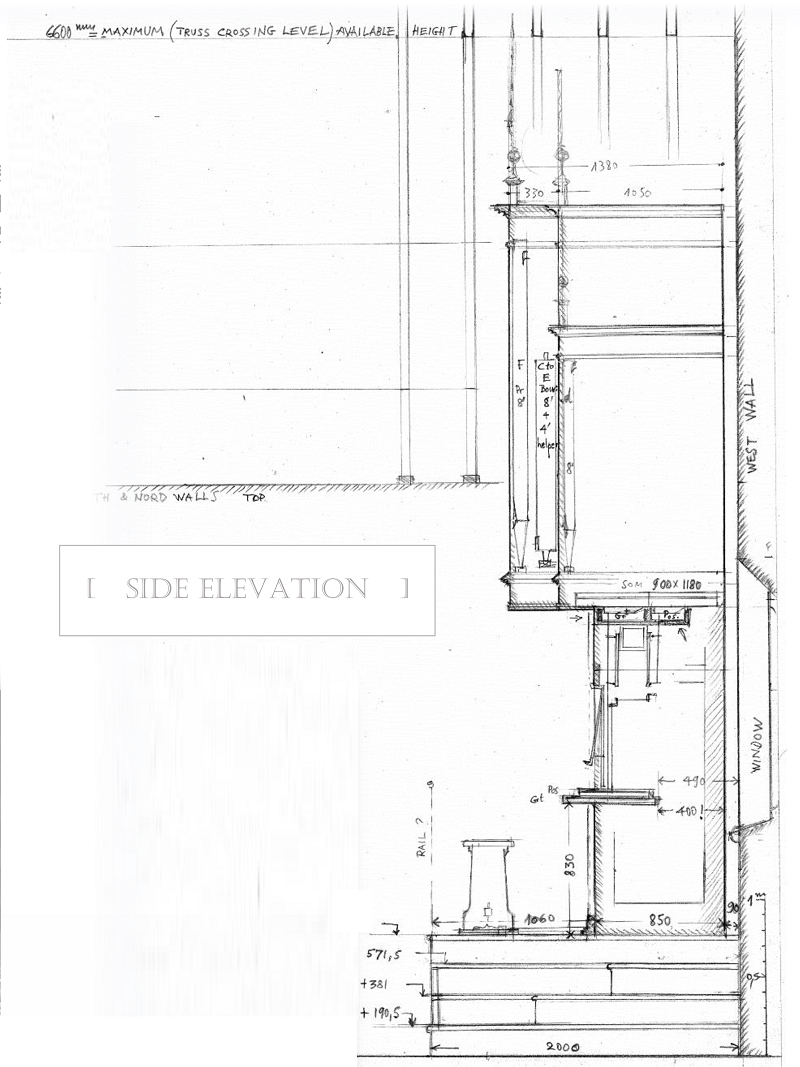Organ appeal
Thanks to the generosity of many individuals and several charitable organisations, we have so far raised £170,000 towards the cost of the Aubertin organ. However, £160,000 remains to be found before the instrument can be completed and installed. Needless to say, the organ is crucial in enabling us to achieve our aims. Without it, we cannot establish scholarships. And without scholarships, here or elsewhere (and “elsewheres” are quickly disappearing), the future of the Catholic musical tradition we represent is in very real danger of dying out.
Please help us to keep this great and important tradition alive for generations to come!
Donate to the organ fund

COMMISSIONED BY THE DAVEY CONSORT CIO FOR THE CHURCH OF ST BIRINUS, DORCHESTER-ON-THAMES
The small, beautiful Catholic Church of St Birinus was commissioned by local land-owner John Davey and opened for worship in 1849. Designed in the Gothic Revival style by William Wardell (a protege of Augustus Pugin), the church has recently undergone a complete restoration, instigated and overseen by the current parish priest, Fr John Osman.
The organ campaign
Currently the church has no pipe organ. In order to secure the musical future of St Birinus and firmly establish an educational legacy for the benefit of generations to come, The Davey Consort has taken the decision to commission a new 13.5-rank instrument from one of the world's leading organ builders, Bernard Aubertin. An organ of this quality and versatility will attract attention from far and wide, and – through the increased possibilities for hosting recitals and concerts – allow music at St Birinus to become financially self-supporting.
To bring this project to fruition, we are seeking to raise £330,000. As of March 2019, we have raised £130,000 towards this target. Further details about how to donate to our campaign can be found overleaf.

“I heartily commend Bernard Aubertin's proposed new organ for St Birinus. With ingenuity that is such a hallmark of this builder, Mr Aubertin has produced a design ideally suited to the worship and architecture of the church. His tonal design makes the most of a small space, providing two contrasting choruses that can be mixed in various combinations; his proposed pedal pipework, sitting outside the main case, serves as the instrument's tonal foundation and also as a charming and distinctive visual feature. As is plainly evident from his drawings, which stem from a careful and intuitive appreciation of the building's proportions and character, the casework will immensely enhance the architecture of St Birinus. Like a Gothic reliquary, this will provide grand architecture in modest dimensions.
I have witnessed several Aubertin organs develop from initial ideas to brilliant completion in Great Britain. Most recently, it was my privilege to work with Bernard as he designed, built and installed a new organ for the King's Hall in Newcastle University (2017). This instrument surpasses my highest hopes. Through casework of breathtaking audacity Aubertin provided an organ twice the size of its predecessor on a footprint only 50% larger; he has triumphantly overcome the intractable challenge of building for a capricious acoustic; each stop has its own personality, and yet all the stops blend harmoniously together; and organ's responsive mechanical action draws real musicianship from the player. The instrument's installation in the autumn of 2017 sparked enthusiasm and pride among the wider community, as they witnessed the arrival in their midst of an extraordinary, unique and enduring artwork.”

ORGAN SPECIFICATION
Great
| Principal | 8' |
| Chimney bourdon | 8' |
| Octave | 4' |
| Nasard | 3' |
| Doublette | 2' |
| Tierce | 1 3/5' |
| Doublette |
MixtureIII-IV
Positiv
| Bourdon | 8' |
| Flûte traversière | 4' |
| Flageolet | 2' |
| Quinte | 1 1/3' |
| Posthorn | 8' |
Pedal
| Bourdon | 16' |
| Bourdon | 8' (by extension) |
II/I, I/II, I/P, II/P tremblant
“Aubertin stands in the very highest rank of organ builders and his instruments in the UK are revelatory. Using the best of historical principles, but never slavishly, his instruments begin with a thorough musical evaluation of the building and he follows this musicality through to the smallest component of construction.”

- Casework of aged oak and chestnut, naturally seasoned
- Pipes, hand-planed, made from tin, lead, oak and chestnut
- Built-in console
- Mechanical suspended action
- Manuals (CC– g''') 56 notes
- Pedal (CC– f') 30 notes
- Manual keyboards made of chestnut with boxwood veneering
- Parallel, oak pedal keyboard
- Pull-down manual couplers
- Oak bench with height blocks
- Oak framed rollerboard with wrought iron rollers
- Wooden trackers, leather buttons
- Wooden turned stop-knobs (boxwood, pear wood, walnut)
“It would be easy to see Bernard Aubertin simply – but impressively – as a successor to the great 18th-century French organ builders. That's as may be. What's more striking is his interest in creating organs with distinctive contemporary identities, reflecting his personality and genius. His instruments are not historical facsimiles but modern works of art, exciting in appearance, tonal colour and responsiveness.”
Donate to the organ fund